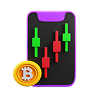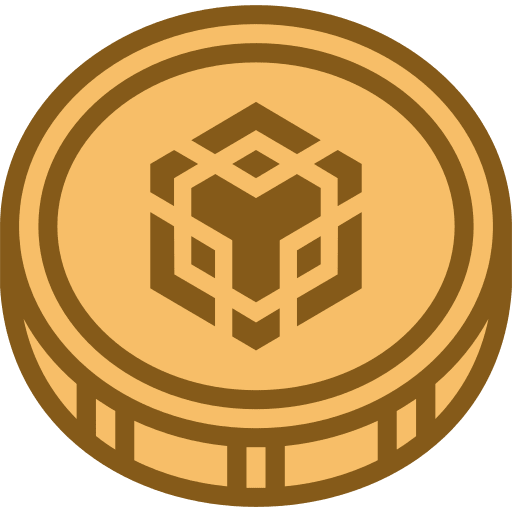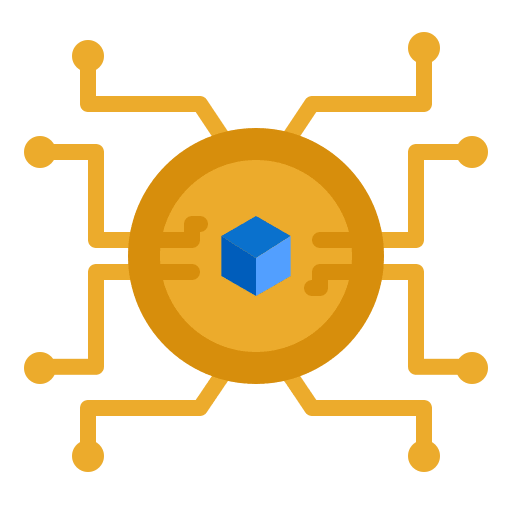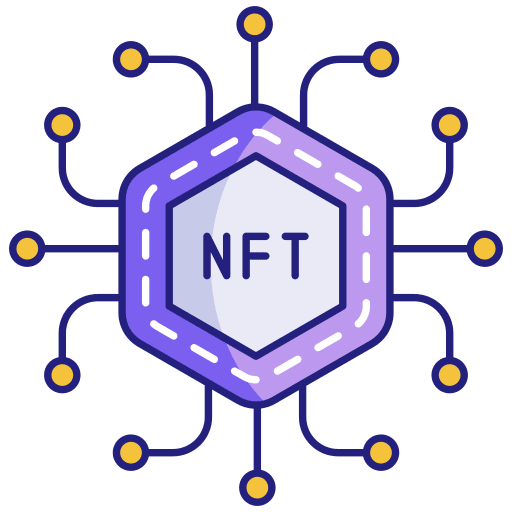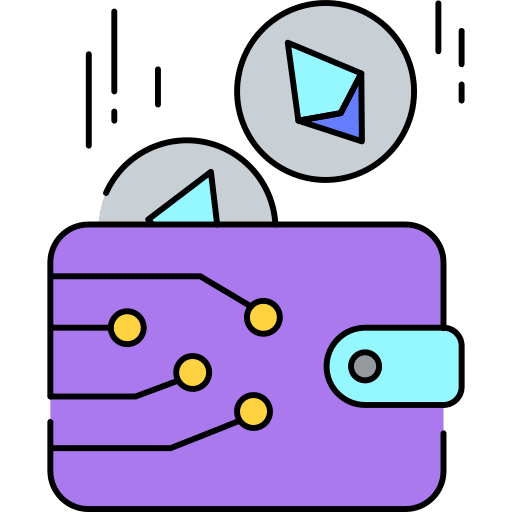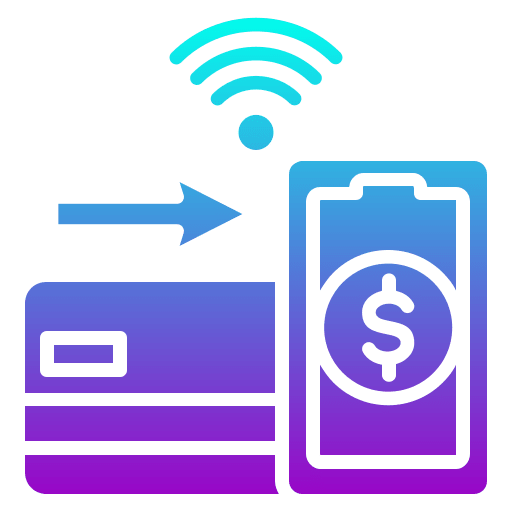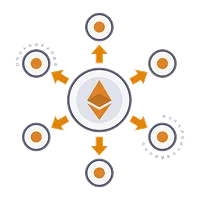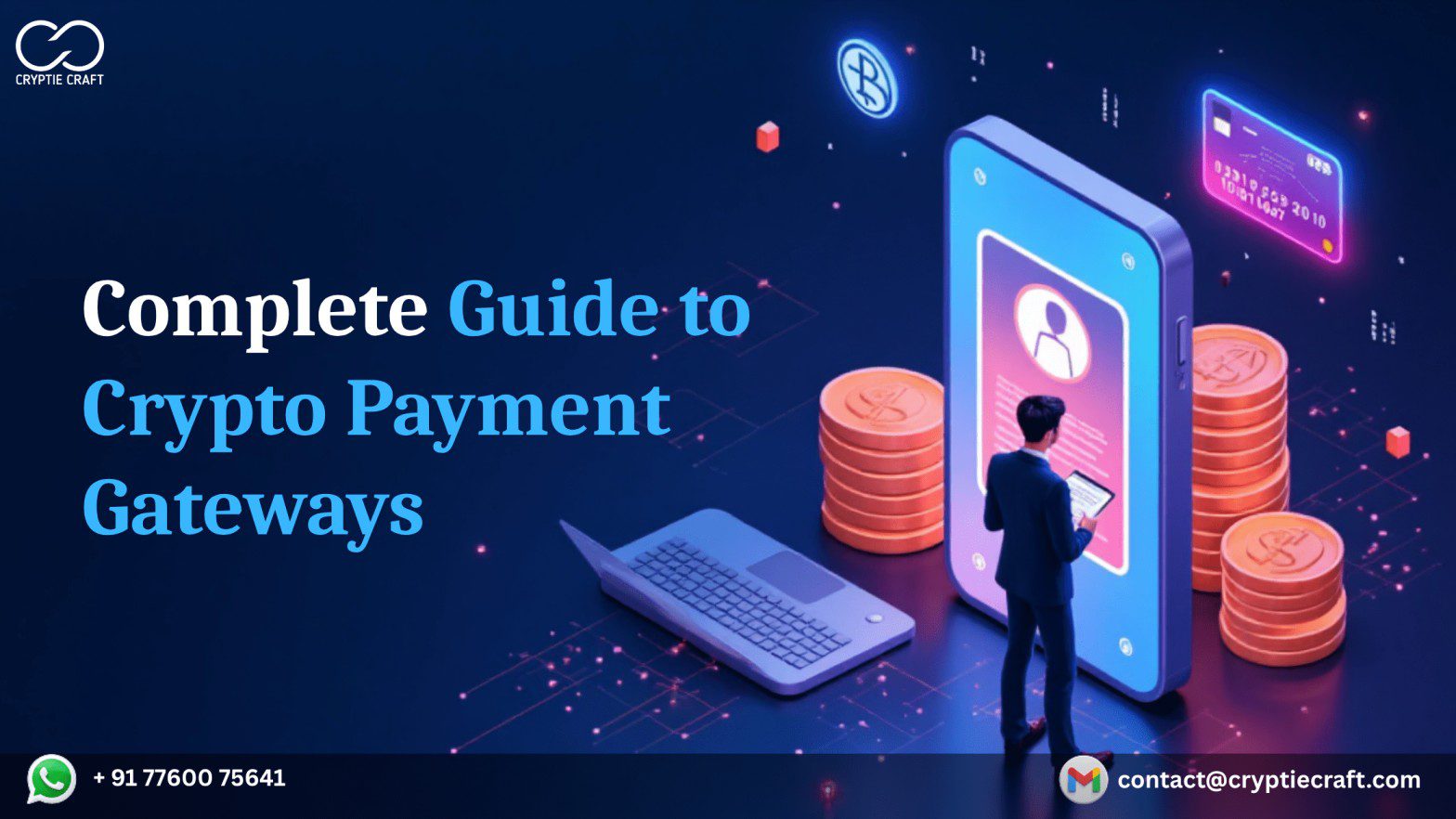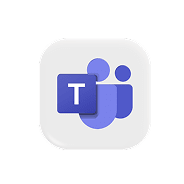Want to build a crypto payment gateway, but don’t know where to start? Nowadays, businesses are integrating cryptocurrency payment gateways to streamline smooth, borderless transactions.
Cryptocurrency is expanding globally, with its features, merchants are using crypto payments such as Bitcoin, Ethereum, and USDT. These gateways provide reduced transaction costs, quick settlement durations, and access to a large audience.
You can dive deeper into expandable solutions for cryptocurrency in 2025, which covers every aspect of how to develop your crypto payment gateway.
What is a Crypto Payment Gateway?
A cryptocurrency payment gateway is a system that enables the processing of cryptocurrency payments. It functions similarly to conventional payment processors such as PayPal and Stripe. But it deals with blockchain-based assets rather than fiat money.
How does it operate?
- The merchant selects a cryptocurrency to make a payment
- The transaction amount is now changed into a coin chosen by the gateway
- The cryptocurrency is now moved to the merchant’s wallet, which can happen instantly or after being converted to fiat.
- For security and transparency, blockchain is used to store transaction details.
Advantages of Crypto Payment Gateway
There are advantages to utilizing a crypto payment gateway, such as:
- Minimal Transaction Cost: Steer clear of expensive credit card and bank fees.
- Global Reach: Receive payments from any nation without having to worry about currency conversion.
- Faster Settlements: Crypto transactions majorly take place within a few minutes to complete.
- Security and Transparency: It concentrates on the transactions based on blockchain, which reduces the risk of fraud and threats.
- No Chargebacks: You cannot reverse cryptocurrency transactions.
Core Features of a Crypto Payment Gateway
When building a cryptocurrency payment gateway, a few key features are required for utility, security, and compliance.
- Enabling Multi-currencies: It accepts popular cryptocurrencies such as USDT, BNB, Ethereum, Bitcoin, and more. Moreover, it supports stablecoins with lower volatility.
- Real-Time Exchange Rates: To avoid market swings, there is an option to automatically convert cryptocurrency prices. With precise fiat cryptocurrency prices for real conversion rates.
- Merchants Dashboard: It keeps track of invoices, earnings, transactions, and cryptocurrency balances. You can view customer data settlements and analytics (KYC/AML compliance)
- Customer Payments Interface: Easy to use with accessible screen checkout along with various wallet options (payments link wallets, addresses, and QR codes)
- Rapid Payments: You can make quick transfers to merchant wallets either instantly or on a scheduled basis by integrating custodial services or third-party wallet options
- Two-factor authentication (2FA): It is important to secure APIs, anti-fraud systems, and SSL encryption. Integration with cold wallets to safeguard assets
- Integration of KYC/AML: Verify the identities of the merchant and customers, which is crucial for regulatory compliance. It aids in illegal actions such as money laundering.
- API & Plugin Integration: It allows developers to link the gateway to POS systems, apps, or websites. Ready-made plugins for e-commerce sites such as Magento, WooCommerce, Shopify, and many more.
- Automated Billing and Invoices: You can automate invoices and bills in fiat or cryptocurrency, which supports lifetime payments or billing subscriptions.
Development Technology Stack
The technical stack serves as the foundation for a typical cryptocurrency payment gateway:
Frontend: Vue.js, Angular, or React.js
Backend: PHP, Python, or Node.js
Blockchain nodes include Geth (Ethereum), BNBChain, Bitcoin Core, and much more.
Database: PostgreSQL, MongoDB.
Wallet Integration: Ledger, Trust Wallet, MetaMask.
Security: HSM for key management, SSL, AES encryption, and JWT.
Development Procedure
Step 1: Planning and Market Research
Choose which cryptocurrencies are supported, and who is your target market; opt for regulatory jurisdictions, which are crucial.
Step 2: Design your UI/UX
Build a user interface that is easy to use for both customers and merchants.
Step 3: Integration with Blockchain
Integrate several blockchains and smart contracts.
Step 4: Wallet Development
Create or incorporate custodial and non-custodial wallets.
Step 5: APIs and SDKs
Provide APIs and SDKs to merchant platforms and developers.
Step 6: Security audits and testing
Conduct thorough testing, with account vulnerabilities unique to the blockchain, and with third-party security audits.
Step 7: Launch and Development
Use hybrid or cloud servers for deployment. After launch, ensure that there is ongoing monitoring and bug fixes.
Crypto Payment Gateway Revenue Model
- Transaction fees: Add a percentage to each payment
- Subscription Plans: Advanced features come with a monthly cost.
- Exchange Margin: A small fee is applied when converting cryptocurrency to fiat money
- Value-added Services: fiat settlement, analytics, KYC, etc.
Difficulties and Things to Keep in Consideration
- AML/KYC regulations, particularly in the US, the EU, and Asia
- Volatility: To reduce risk, utilize fiat conversion or stablecoins.
- User Education: Crypto payments are still relatively new to many merchants
- Security: To secure money and data, the highest standards must be met.
Why Choose Cryptiecraft for the Development of a Crypto Payment Gateway?
With Cryptiecraft, you can experience skilled development of blockchain technology where you can customize a secure and scalable solution for launching your crypto payment with high-end features, fostering a valuable relationship in the crypto market. You can access end-to-end development and post-launch support
Ready to launch your crypto payment gateway? Talk to our experts today!
Concluding Remarks
The potential of cryptocurrency payment gateways in 2025 is growing rapidly, particularly in emerging digital currencies. However, strong technology, strict security, and regulatory compliance are instrumental for smooth engagement. Whether you are a fintech innovator or a startup, creating a cryptocurrency payment solution is now a step into the decentralized finance of the future.
FAQ (Frequently Asked Questions)
Q1: Is it legal to use crypto payment gateways?
Ans: Yes, it depends on your jurisdiction and demographic location. Many countries allow the use of crypto payment systems, complying with KYC (Know Your Customer) and AML (Anti-Money Laundering).
Q2: What currencies can be supported?
Ans: A fully developed gateway can support coins like Bitcoin (BTC), Ethereum (ETH), Binance Coin (BNB), and USDT (Tether), along with stablecoins like USDC.
Q3: Do I need to build a gateway from scratch?
Ans: Not necessarily. But you can use a white label crypto payment gateway solution. This will save time and resources. However, it gives you full control over customization and security.







